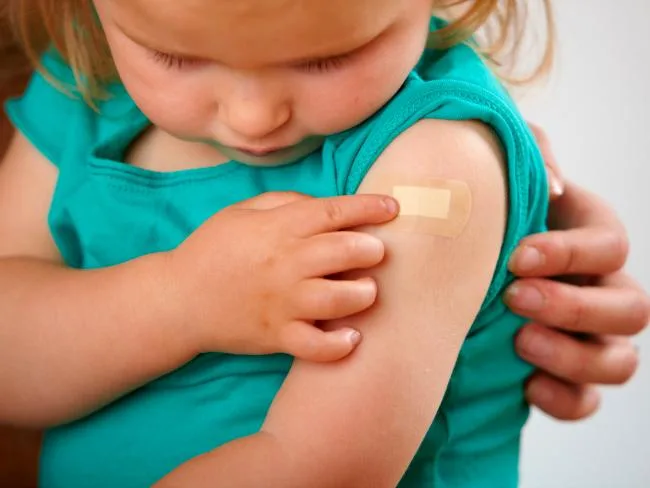The peak season for meningococcal outbreak– winter and spring– is upon us. And health authorities are warning the public to take precautions to prevent catching it.
There have been forty cases reported in NSW already this year, according to NSW Health.
People of all ages can get this serious illness, but adolescents and children up to the age of five are at highest risk of the condition. That’s why parents with young children especially are being urged to familiarise themselves with the symptoms, check their child’s vaccinations are up to date and act quickly if they suspect the illness.
Children can be protected against the B and C strain of the meningococcal bug with a vaccine.
Paediatrician Dr Jenny Royle says the keys to fighting this rare, but serious infection are timely vaccinations and keeping a close eye on children who are unwell.
“The existence of that germ, type B, is why families need to know about meningococcal disease, and be vigilant about it,” says Dr Royle, who works with the immunisation service at Melbourne’s Royal Children’s Hospital.
“The difficulty is that when the meningococcal germ becomes generalised in the blood stream, it has a very fast, sinister action, and that’s why you can very quickly die before anyone has even known what you’ve got.”

What is meningococcal disease?
This is an infection with the meningococcal bacteria which can cause inflammation of the lining of the brain, which is called meningitis, or an infection in the blood, septicaemia and sometimes both.
Three main bacteria can cause meningitis: meningococcal, pneumococcal and Haemophilus influenza type b (Hib). Vaccines are available for Hib, for the common strains of pneumococcal and for meningococcal B and C. Viruses can also cause meningitis.
The meningococcal bacteria are spread through droplets from the nose or throat through sneezing or coughing.
Figures show that between 2000 and 2002, 522 children under the age of four were admitted to hospital with meningococcal disease. It’s treated with antibiotics but even with urgent attention, about 10% of those with the illness die. Others can be left with a permanent brain injury and deafness.
Signs and symptoms
Parents have been made well aware of the red rash associated with meningococcal disease – it’s the one which doesn’t fade when pressed with a glass. Even though it’s an important symptom of the illness, it often means the illness is already well underway.
“It’s a good sign of meningococcal disease, but you’d also like to pick it up before you get that rash,” says Dr Royle.
Other signs to look out for include fever, irritability, extreme tiredness, vomiting, turning away from the light and drowsiness.
“In young babies it’s good to have a low index of suspicion with an unwell child with a fever,” says Dr Royle.
“Parental worry about children is often very helpful and accurate. If you’ve been to the doctor and sent home, and your baby’s getting worse, or not getting better, parents should act on their own sense of worry and get the child re-checked.”
It’s also crucial to make sure vaccines are given on time, not delayed, or the consequences can be tragic.
“You don’t want to have your vaccines late, you want to get them as soon as they are due… that’s really the best thing you can do for preventing meningitis. We have seen cases in families who delayed, and that is really bad.”
Meningococcal vaccine facts
A vaccine for Type B and C Meningococcal disease is available.
Immunisation is the best protection against Haemophilus influenzae type b (Hib) and meningococcal group C disease. The National Immunisation Program provides the first three doses of Hib vaccine to children at two, four and six months of age in a combination vaccine. The final booster dose of Hib vaccine is given in combination with meningococcal C vaccine at 12 months of age. Common side effects from immunisations are usually mild and temporary, and do not require specific treatment.
The duration of protection is uncertain but hopefully life-long.
The vaccine is free from your GP.
Side effects from these vaccines are uncommon and are usually mild, but may include:



